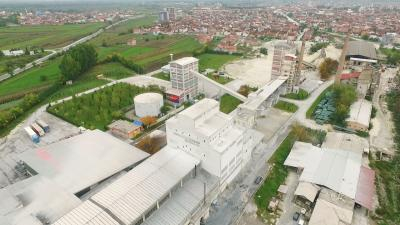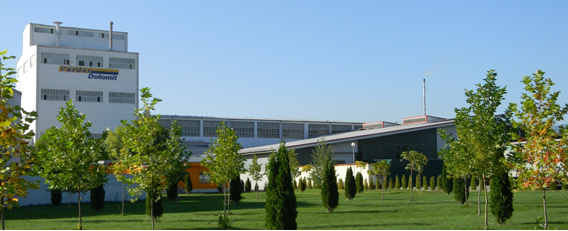By Zlatko Gjrchinoski*
Anyone whose job is directly or indirectly related to energy either knows or at least should know about ISO 50001, the ISO standard for Energy Management Systems (EnMS). Some of the aims of an EnMS in line with ISO 50001 are the improvements of energy performances, the reduction of energy usage and costs, as well as the compliance with legal and other requirements.
One key element for achieving the aims of an EnMS, is a strong top management support. In order to have success in an industrial environment, it is necessary to have everyone in the workplace focus on energy awareness. However, it is also critical to have a focus on other necessary elements, such as planning, calculations, measurements, adequate competencies, and training. Another critical aspect is for success is effective communication for all those individuals within a production unit, especially for those whose work has a direct impact on energy consumption.
As an energy manager, I know that we must focus on reporting energy performances together with compliance of standards and often, due to lack of time, we neglect an element that is not a standard reporting requirement: non-energy benefits. However, this often forgotten, ignored, and neglected aspect of EnMS implementation usually goes hand in hand with improved energy performance and reduced energy consumption.
Non-energy benefits can be considered all those benefits that are not directly connected to energy, but are achieved as the result of the implementation of an EnMS. There are plenty of examples of non-energy benefits. We recently implemented an EnMS at an industrial facility – Vardar Dolomit – in Gostivar, Republic of Macedonia and we recorded the following non-energy benefits.
- One of our energy efficiency measures was the replacement of mercury lamps with LED lights, which resulted in lower maintenance cost: a significant non-energy benefit.
- The replacement of an air compressor with a new, more efficient compressor, resulting in lower energy consumption and lower maintenance costs, as well as reduced noise levels in the compressor room.
- After developing energy performance metrics and energy performance indicators (EnPIs), we had a much better understanding of our energy consumption. This knowledge improved our energy forecasting capacity – something which is especially important for companies buying their electricity at spot prices in open markets.
- In addition to energy savings, the implementation of an EnMS resulted in better maintenance procedures which translated into lower production downtime and increased overall productivity.
At this point, readers might say that these non-energy benefits were somewhat predictable. True. However, my own experience shows that other non-energy benefits, both expected and unexpected, may result from the implementation of an EnMS. Let me share a unique situation we experienced with our oven for tempering bricks.
This oven is a significant energy-consuming component at our industrial facility. As with all of our other significant energy-consuming units, we started monitoring its performances on a weekly basis. We had already built our models for monitoring energy performances for all significant energy users, but for this kiln, our model was not very strong. Weak models are usually caused by:
- Incorrect or incomplete input data.
- Important independent variables that are missing in the model, or 2 or more independent variables that are interconnected.
- Weak operational controls.
As part of our EnMS, and to improve the strength of our model, we crosschecked all input data several times and did not find anything unusual. We also tried building alternative models with all known variables, but we could not find any model that was better than the existing one. The next logical step was to check the operational controls and critical operational parameters.
We began to challenge critical operational parameters set points by carefully monitoring what was happening. We also created a new model where energy performances would be monitored on a daily basis rather than weekly, in order to shorten the monitoring time.
Through the use of this new model, together with careful adjustments of the operational parameters, as well as monitoring the impact of these changes – all while aiming to maintain production quality at an acceptable level – we managed to improve the energy performance of the furnace by more than 5%. This result was double our initial expectations.
We continued to monitor the energy performances on an almost daily basis in order to maintain the significant increase in energy efficiency. After several months of follow-up, we were suddenly surprised when we detected rapid deterioration in the furnace energy performances for two consecutive days. This triggered an immediate investigation.
During the inspection, we discovered an increase in light fuel oil consumption, which was due to failure of the exhaust gasses diverting blade. Due to the malfunction of this blade, one pipe was overheating, and there was a major risk of the pipe’s insulation igniting, potentially resulting in a fire that could have spread throughout the furnace. The oven was immediately stopped, and corrective measures were implemented.
As the fire was prevented before it could happen, there is no way of knowing precisely how much damage could have occurred. However, we can think of significant damages, such as damage to the equipment, the cost of repairs, lost production, etc. It is certain that the costs resulting from the damages would have been greater than those related to the implementation of the EnMS. The EnMS prevented not only costly damagages, but also increased energy savings and prevented potential staff injuries. Without a doubt, this was our biggest non-energy benefit to date, as a result of the implementation of our EnMS.

(*) Zlatko Gjurchinoski is the Energy Manager at the Vardar Dolomit, Gostivar facility. He is a UNIDO qualified expert in Energy Management System implementation
 Vardar Dolomite is a European manufacturer of sinter dolomite, dolomite bricks and monolithics, located in Gostivar and owned by HAZNEDAR REFRACTORIES GROUP. Dolomite usage in the steelmaking industry has been rapidly increasing in the past decades as a result of its favorability in the making of clean steel with a clean environment. Dolomites’ high degree of refractoriness, inertness to steel, great service performance and low cost make it a more conscious and reasonable preference for the steelmakers of the 21st century. With a manufacturing capacity over 60,000 tons annually.
Vardar Dolomite is a European manufacturer of sinter dolomite, dolomite bricks and monolithics, located in Gostivar and owned by HAZNEDAR REFRACTORIES GROUP. Dolomite usage in the steelmaking industry has been rapidly increasing in the past decades as a result of its favorability in the making of clean steel with a clean environment. Dolomites’ high degree of refractoriness, inertness to steel, great service performance and low cost make it a more conscious and reasonable preference for the steelmakers of the 21st century. With a manufacturing capacity over 60,000 tons annually.




